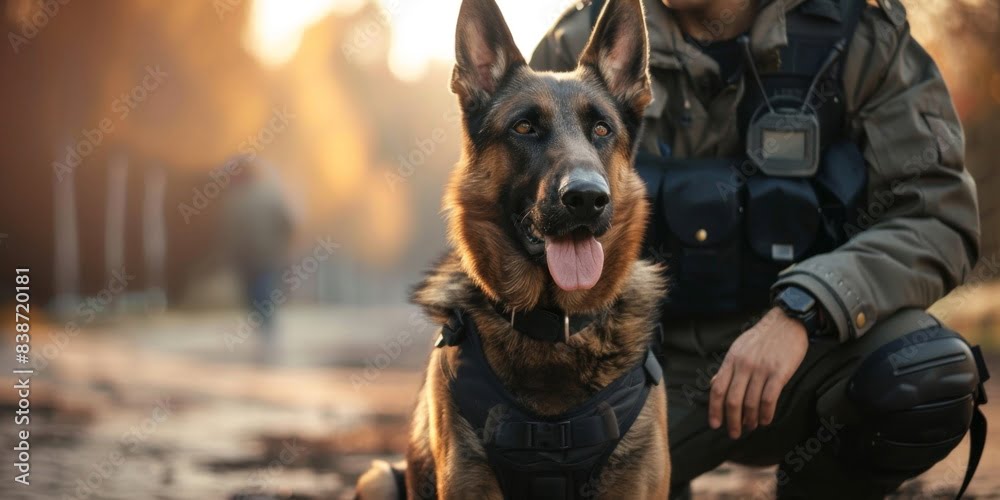Police K9 attacks play a crucial role in law enforcement, utilizing highly trained dogs to assist in various operations. While these dogs are invaluable for tasks such as detecting drugs, searching for suspects, and protecting officers, there have been instances of police K9 attacks that raise concerns about safety and training. This article explores the factors contributing to police K9 attacks, the training protocols for these dogs, and measures to ensure safety for both officers and the public.
The Role of Police K9 Units
Police K9 units are an integral part of many law enforcement agencies. These dogs undergo rigorous training to perform specific tasks, including:
- Detection: Sniffing out drugs, explosives, and other contraband.
- Tracking: Locating missing persons or fleeing suspects.
- Apprehension: Assisting officers in capturing and restraining suspects.
- Protection: Guarding officers and preventing attacks.
These specialized skills make police K9s indispensable, but they also require careful handling and control to prevent unintended harm.
Causes of Police K9 Attacks
Despite extensive training, police K9 attacks can occur due to several factors:
- Miscommunication: Incorrect commands or signals from handlers can confuse the dog, leading to unintended aggression.
- Improper Training: Inadequate or improper training methods can result in a lack of control over the dog’s behavior.
- Environmental Stressors: High-stress situations can trigger defensive or aggressive responses in K9s.
- Handler Error: Mistakes by the handler, such as losing grip on the leash or failing to issue timely commands, can lead to attacks.
Understanding these causes is essential for mitigating risks and improving the effectiveness of police K9 units.
Training and Certification of Police K9s
The training of police K9s is a comprehensive process that includes:
- Basic Obedience: Ensuring the dog responds reliably to basic commands such as sit, stay, and come.
- Specialized Skills: Training in specific tasks like detection, tracking, and apprehension.
- Socialization: Exposing the dog to various environments and situations to reduce anxiety and improve adaptability.
- Handler Training: Equipping handlers with the skills to effectively manage and control their K9 partners.
Certification from recognized organizations, such as the National Police Canine Association (NPCA) or the United States Police Canine Association (USPCA), ensures that both the dog and the handler meet high standards of competence.
Safety Measures and Protocols
To minimize the risk of police K9 attacks, several safety measures and protocols are in place:
- Regular Training and Assessment: Ongoing training and regular evaluations help maintain the K9’s skills and address any behavioral issues.
- Proper Equipment: Using appropriate leashes, harnesses, and muzzles can prevent accidental attacks.
- Clear Commands and Communication: Consistent and clear commands help prevent confusion and ensure the dog’s proper response.
- Stress Management: Techniques to manage and reduce stress in K9s can help prevent aggressive behaviors.
- Public Awareness: Educating the public on how to behave around police K9s can reduce incidents of provocation or miscommunication.
These measures are crucial for the safe and effective use of police K9 units in law enforcement.
Legal and Ethical Considerations
Police K9 attacks also raise important legal and ethical questions. When an attack occurs, determining liability and accountability can be complex. Issues to consider include:
- Use of Force Policies: Ensuring that the deployment of K9s aligns with established use of force policies.
- Civil Rights: Protecting the civil rights of individuals who may be subject to K9 apprehension.
- Transparency and Accountability: Maintaining transparency in K9 operations and holding handlers accountable for misconduct.
These considerations are vital for maintaining public trust and ensuring the ethical use of police K9s.
Conclusion
Police K9 units are a vital asset to law enforcement, but they come with inherent risks. Understanding the causes of police K9 attacks, implementing rigorous training and safety protocols, and addressing legal and ethical issues are essential for the safe and effective use of these highly trained dogs. By taking these steps, law enforcement agencies can enhance the safety of both officers and the public while maintaining the valuable contributions of their K9 partners.


